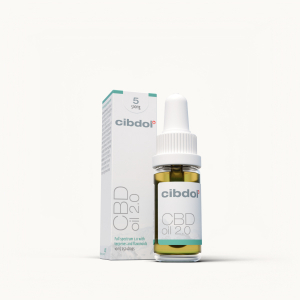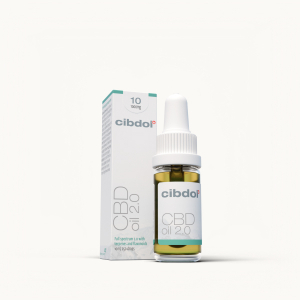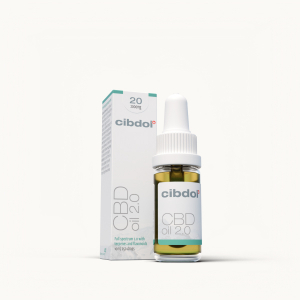Living life without discomfort
Relief Information Page

Live the life you've always wanted
The impact of pain and discomfort may be different for all of us, but one factor remains the same—disruption to living the life you want and doing the things you love. The distress you feel day in and day out can severely impact your quality of life, but it doesn't have to be this way.
- Different types of pain
- Acute vs chronic: What's the difference?
- Signalling between mind and body
- Discomfort: Small changes you can make
- Ingredients that may help
Our relief suggestions
Different types of pain

Nociceptive
pain
Most pain typically falls into one of two categories: nociceptive or neuropathic. The former usually derives from external stimuli (think stepping on a sharp object), while the latter involves issues with your body's nervous system.
Neuropathic
pain
Acute vs chronic pain:
What's the difference?
Acute
Stepping on a sharp object, hitting your elbow, or cutting the skin—all of these actions trigger instances of acute pain. The sensation usually only lasts several minutes, but it can continue for 3–6 months in some cases.

Chronic
Chronic pain is far more severe, failing to subside even after removing obvious triggers. It can result from any part of the pain pathway becoming damaged or not working correctly, and is a frequent byproduct of underlying health conditions.

Signalling between
mind and body
CBD is known for its comprehensive influence.
Pain is a reaction to harmful or dangerous stimuli. It reminds us to withdraw from threatening situations and has helped the human race survive for millions of years. As upsetting as being in pain is, our body wouldn't be able to heal and repair without it.

Producing full-body effects.
However, painful sensations do not have a direct link to our brain, despite how instantaneous they feel! Instead, pain relies on several different neurons and nerve pathways to get from the source of the pain to our brain, and back again.
How does the body process pain?

Processing pain relies on two key components: the dorsal horn and the thalamus. The former is a nerve centre located at the base of the spine, while the latter is a part of the midbrain responsible for organising pain signals.
Once organised, the signal arrives at the sensory cortex (our emotional response to pain), where it is deciphered and interpreted by the motor cortex (our physical reaction to pain).

Discomfort:
Small changes you can make
Self-treatment, such as mindfulness meditation, supplements, and lifestyle changes, plays a significant role in pain management.
Often, these small steps can positively impact our quality of life. Just because discomfort is unavoidable doesn't mean it's unmanageable.

Movement
Stay active to help control pain.

Supplements
Try natural supplements and complementary treatments.

Mindfulness
Manage your learned response to pain.

Talk
Discuss your frustrations with others.

Share
Ask for help with painful activities.
Ingredients that may help
| Cannabinoids | Cannabidiol (CBD), Cannabinol (CBN) | Cibdol products that contain cannabinoids are: CBD Oil |
Cibdol is here to help with its comprehensive range of natural relief products, helping you move freely and seize the day.
Frequently Asked Questions
Got questions about relief?
- What is pain?
-
Physical pain may seem a more obvious condition to deal with, but that doesn't always make symptoms easier to manage. In fact, physical pain treatments can differ wildly because we all experience pain differently. People's pain threshold varies, and that means no two instances of physical pain are ever the same, despite how similar they may appear.
Whether it's nociceptive pain (a bump or cut), radicular pain (compression), or visceral pain (damage to internal organs), there are dozens of physical pain sensations, each with its own symptoms, coping techniques, and treatments. Fortunately, most instances of physical pain are acute, meaning once you heal or treat the injury, the pain will pass.
However, it's not uncommon for physical pain to become chronic, especially if it's related to a back or neck injury. In fact, one in five European adults lives with constant pain. Although the pain may be manageable in most cases, that doesn't stop it from chipping away at your confidence and lust for life.
If you do find yourself experiencing acute or chronic physical pain, help is readily available. Whether it's via coping techniques such as mindfulness, supplements, exercise, or talking to others, there are dozens of ways you can live a fulfilling life despite chronic pain. As for treatment, the most beneficial approach hinges on an accurate diagnosis. Don't delay in reaching out to your doctor or physician, and, if possible, keep a log of the pain you experience to help them pinpoint a cause.
To learn more about the different types of pain, why we all feel pain differently, and the best ways to manage chronic physical pain, read our extensive article.
- What is neuropathic pain?
-
Nerve pain, or neuralgia, is not only difficult to treat, but it can severely impact quality of life. Along our entire body exist trillions of nerves, which can make identifying the underlying cause like looking for a needle in a haystack.
Pain, in principle, is a simple concept. Something causes our body harm, and it reacts appropriately. But with neuropathic pain, the discomfort, itching, numbness, or reduced sensation stems from disruption to pain signals and the nerves that carry those signals. That's why nerve pain remains a challenging condition to treat—our pain response is significantly more complex than it may appear.
Most of the time, neuropathic pain stems from an injury, disease, or infection. Nerve pain will rarely occur randomly, but it falls into one of several categories when it does. Fortunately, by defining the type of neuropathic pain experienced, it's possible to isolate the disruption to our pain signalling. For example, focal neuropathy centres around the head, hand, torso, or leg, and usually points to single nerve damage rather than a specific nerve centre.
Although neuropathic pain may feel overwhelming at times, there are dozens of coping techniques and possible treatments. Pain may be a sophisticated mechanism, but so too are modern remedies. Of course, as every person's pain response is unique to them, it's important to be open to various treatment options to determine which one best addresses symptoms. Nerve blockers, physical therapy, supplements, lifestyle changes, and medication can help restore an active quality of life.
If you're interested in learning more about our pain response, how our body processes pain, and how to live with neuropathic conditions, read our in-depth article.
- What is gastritis?
-
Affecting 8 out of every 1,000 people, gastritis is a common digestive disorder that causes significant disruption to everyday life. The result of inflammation in the stomach, gastritis symptoms range from mild discomfort to severe stomach cramps, nausea, and vomiting.
Although it's common to develop gastritis as a byproduct of an autoimmune disorder, dozens of common substances can trigger the condition. For example, excessive smoking, alcohol, and anti-inflammatories (NSAIDs) can all prompt a breakdown in our stomach's protective lining. It's this breakdown that causes irritation as our stomach acids begin to wear away at the inside of the stomach.
Fortunately, diagnosis of gastritis is straightforward, with a simple blood or stool test able to quickly identify potential causes. However, depending on the exact cause of gastritis, treatment can be a little trickier. If the condition is due to the triggers outlined above, simple lifestyle changes may be all that's required. On the other hand, if bacteria or existing autoimmune disorders are to blame, doctors may try a combination of antacids, medication, vitamin B12, and antibiotics.
Encouragingly, there are plenty of practical coping techniques if you are living with gastritis, and even minor changes can make a significant difference to the severity of symptoms. Of course, if you suspect you may have gastritis, your doctor should always be the first port of call. But once you know what you're dealing with, splitting meals, self-medicating (appropriately), and taking supplements can all help.
If you want to learn more about gastritis, including the complete list of symptoms, potential treatments, and how to live with the condition, read our comprehensive article.















